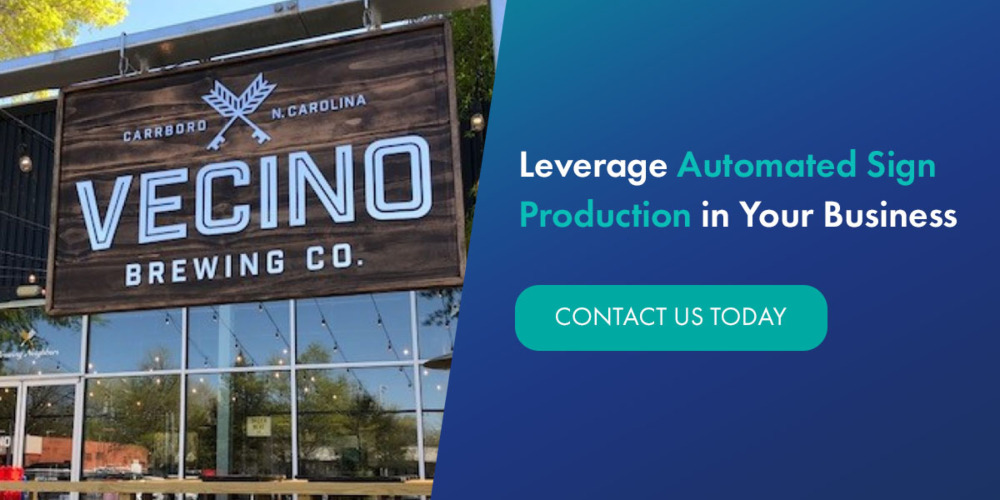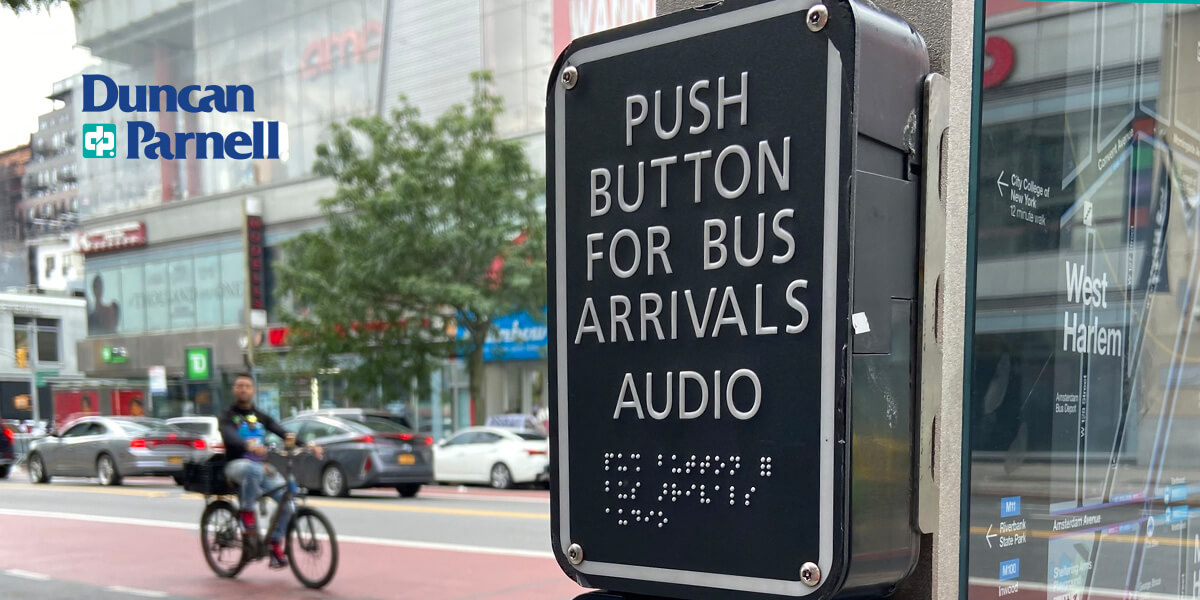Signage Trends and Emerging Technologies in 2024
Integrating new trends in your signage is an effective way to showcase your business as a market leader. Whether you're interested in sustainable signs or leveraging emerging signage technologies, there are some exciting trends to implement over the coming year.
In this guide, we'll help you discover the newest signage trends in 2024, enabling you to optimize your brand's message. Learn how to harness trending signs for your industrial or commercial enterprise and build stronger connections with your customers.
Understanding the Signage Market Landscape
Digital signs may be gaining popularity, but there is still a significant demand for printed signage. According to Statista, the global printed signage market will reach approximately $41.4 billion by 2028. Analysts predict a steady incline in the industry until then. Three primary reasons driving the growth of printed signs include:
- Quick installation: Banners, wayfinding signs, and window graphics are all easy to install without the need for a professional team.
- Cost-effectiveness: One printed sign can reach hundreds or even thousands of customers. Investing in printed signage helps you ensure a favorable return on investment.
- Readability: Static images and typography are easy to read, delivering maximum input to customers.
Emerging Signage Technologies
Whether you're an established business or a startup, leveraging these trends in the sign industry will help build your brand:
- Unique fonts: One-of-a-kind typography offers a bold way to establish your business as different from the rest.
- Eco-friendly signs: Green business practices are becoming increasingly popular, with the global green technology and sustainability market expected to increase at a compound annual growth rate (CAGR) of 20.8% between 2023 and 2030. With this in mind, more companies are opting to include recycled elements in their signage for a lower carbon footprint.
- Clutter-free designs: Businesses are prioritizing negative space and simple designs in 2024, ushering in an era of less is more.
- Navigational signage: Signs play a pivotal role in delivering an optimal customer experience. An increasing number of businesses are leveraging wayfinding signs and other navigational elements to help customers find their way through airports, bus terminals, and other public spaces.
- Biophilic design: This trend refers to adding plants and other natural elements to signage. It offers an effective way to blend nature with custom signage solutions for maximum impact.
- Interactive solutions: From adding a specific hashtag to your sign to including touchscreen capabilities, there are many ways to make your signage more interactive for a lasting impression.
How Automation Is Changing the Game
In the past, companies have relied on print proofs to identify errors before a job goes to print. While these samples are still necessary, automation has helped to minimize the chance of misprints — here's how.
The Advantages of Automation in Signage Production
Automation has empowered multiple industries — and the printed signage sector is no different. Here are some benefits of leveraging automation for your next printed signage project:
- Quick approval: Automation software shortens project times by allowing companies to make changes, spot errors, and suggest edits quickly.
- Fewer errors: Errors are instantly flagged, reducing the likelihood of costly misprints.
- Streamlined processes: From booking a job to loading files, automation helps simplify each stage of a signage production project.
- Integrated systems: Each job relies on various systems for it to transgress from concept through to completion. Automation allows efficient communication between these systems.
- Time-saving: Fewer errors and reduced resources boil down to one thing — saving time. Automation helps maximize time efficiency across project stages.
Adapting to New Signage Trends
As signage trends are ever-evolving, it's important to keep your finger on the pulse. Discover some of the best ways to integrate new strategies into your business communication.
Staying Ahead With Continuous Learning
Following relevant blogs is one of the easiest ways to stay abreast of sign production trends. By subscribing to industry-leading content, you are alerted to the latest signage insights to bridge skill gaps within your workforce and deliver cutting-edge projects.
In addition, you can view online videos and read relevant documents. For example, Duncan-Parnell offers various educational initiatives for clients across industries, helping you access the tools you need to take your project to the next level.

Support Systems for Technological Adoption
Technological changes are necessary for business growth — but that doesn't mean it's easy for your team to adapt to them. Here are some tips for better implementation:
- Set a strategy: Before investing your resources in new trends, ensure they align with your business strategy. Once you implement new goals, set quantifiable supplementary objectives to track your progress.
- Involve employees: From gathering your staff's valuable input to addressing their fears, integrating employees into your technological advancement process helps to ensure a smooth transition.
- Put your customer first: While this may seem like common sense, it's important enough to mention again — keep your client at the top of your mind. By prioritizing your customers in your signage strategy, you ensure your messaging hits home.
- Choose the best tech for the job: With technology constantly advancing, there are many signage options to choose from. Listing your business needs helps you select the best solution to ensure you strengthen your communication with your audience.
- Solicit team feedback: Your employees are the ones dealing with customers on a regular basis — open the channels for staff feedback, and use these insights to enhance your signage strategy.
While it's important to update signage in light of the newest trends, it's also wise to choose solutions that stand the test of time. By considering these five tips in your signage strategy, you ensure team cohesiveness and maximum return on investment from your signage solution. Working with a professional signage team offers another way to leverage the most up-to-date technology with minimal disruption to your current practices.
Leverage Automated Sign Production in Your Business
As we navigate the evolving landscape of signage in 2024, Duncan-Parnell remains a beacon of innovation and support. By aligning with our forward-thinking solutions and services, businesses can confidently adapt to and engage in the signage revolution. Join us in shaping a future where technology and creativity merge to create impactful and efficient signage experiences.
Ready to revolutionize your signage strategy with Duncan-Parnell's expert solutions? Contact us online today to learn how our advanced technologies and dedicated support can elevate your business in the competitive landscape of 2024 and beyond.



